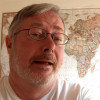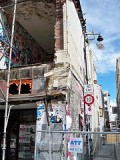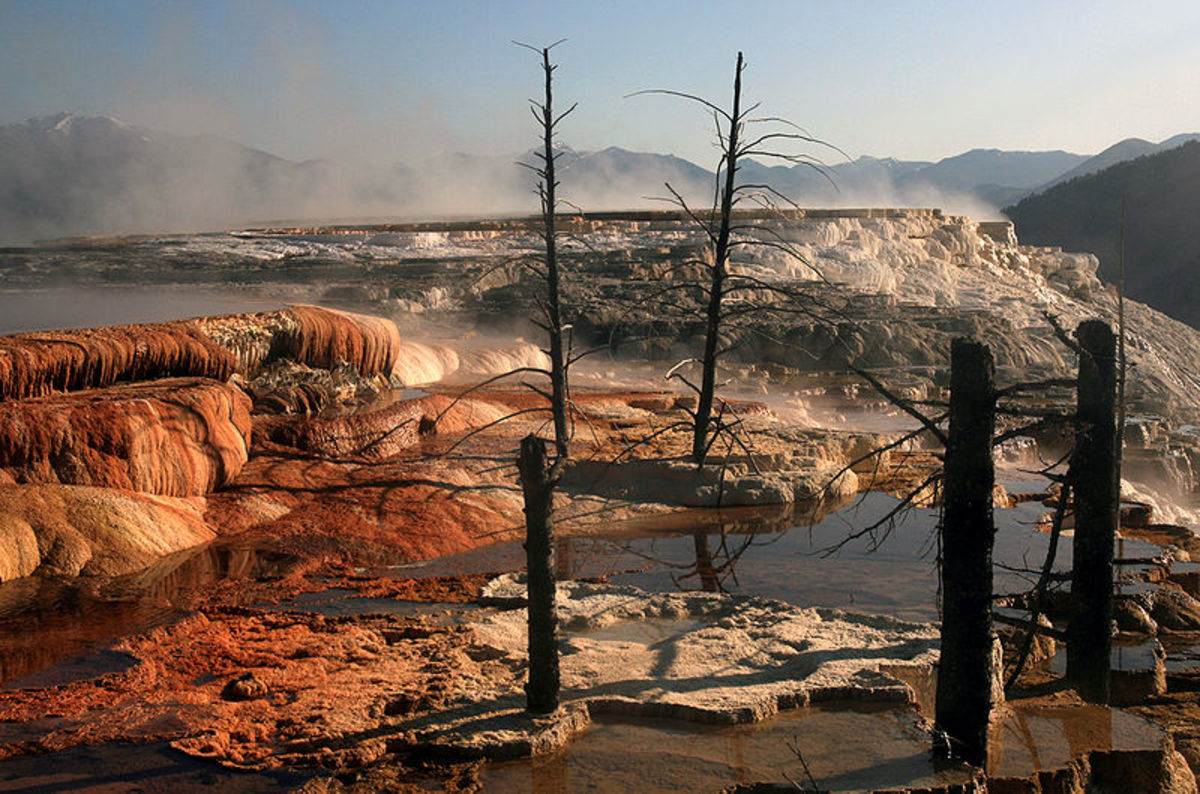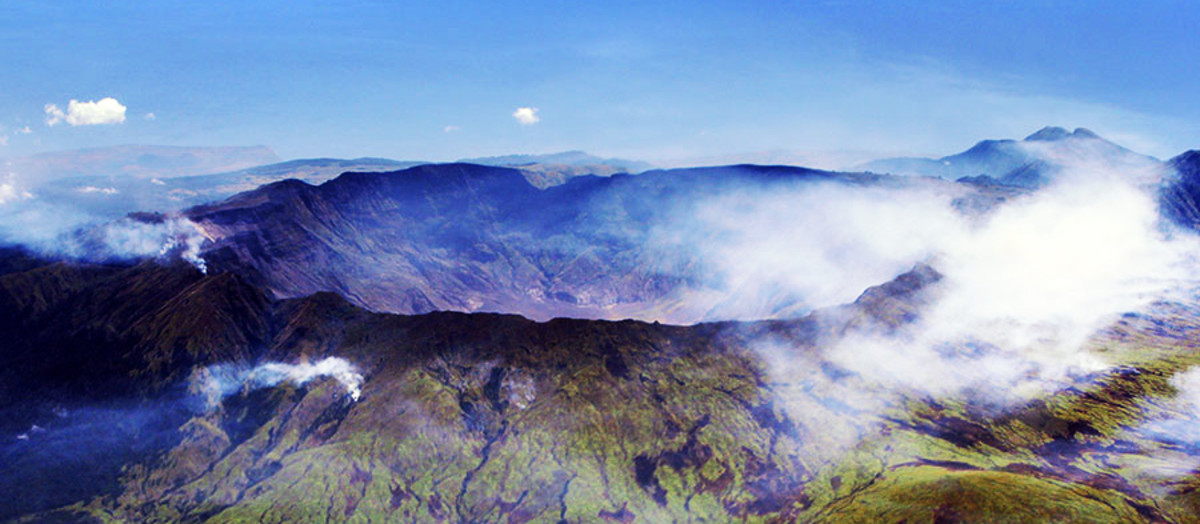An Aftershock, or Not an Aftershock.. Plus Seismic Activity Surges..
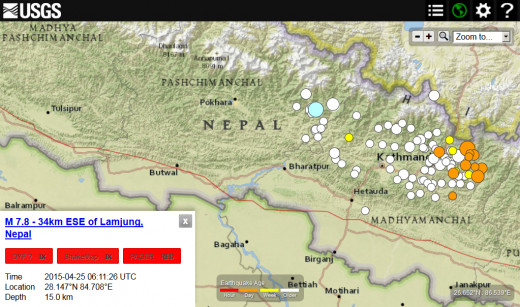
Anomalous Activity May Hold Some Clues..
Seventeen days following the deadly 7.85 magnitude earthquake in Nepal of 25 April 2015, a 7.25 magnitude event occurred 140 kms (87 miles) east of the main shock. But this was not a textbook aftershock, unless you are looking for an exception..
The largest aftershock to a main shock is usually about 1.15 magnitude smaller than the original event. Also, the epicenter of an aftershock is almost always within the original fault rupture area. Neither of these two general rules were met by this so called aftershock.
Shortly after the 25 April earthquake, there were two aftershocks listed by the USGS. The first one was 34 minutes after the main shock and registered as a 6.65 magnitude event. It was also very close to the original shock's epicenter. But something strange happened 1 day and 58 minutes after the main shock, when there was a 6.75 magnitude event, 134kms east of the main shock's location. This was also near the outer edge of the rupture zone (even considering that the rupture zone leaned significantly to the east of the original epicenter).
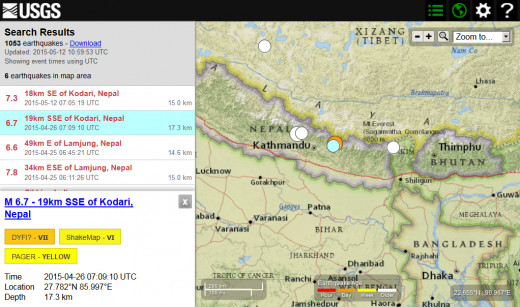
Almost exactly 16 days after this anomalous shock of 6.75 magnitude, there was a 7.25 magnitude earthquake at nearly the same location. Curiously, most of the aftershocks to the original or main event were located way east of the first or primary epicenter, or between the location of the first or main shock and these last two shocks (of 6.75 and 7.25; see map with the large blue circle representing the 7.85 magnitude main shock and the large orange circle representing the 7.25 magnitude event of 12 May 2015).
One thing that should be noted here is that, although a shallow focus, 7.85 magnitude event is very dangerous near populated areas such as was the case in Nepal, that same area is capable of producing earthquakes even larger than that. Scientists actually are saying that it could have been much worse, but the unfortunate fact is that it still could get much worse. The 7.25 magnitude shock of 12 May 2015 and the preshocks, which were aftershocks to the 25 April 2015 earthquake, were chain reactions due to the weakening or destabilizing of surrounding faults to the east of where the main shock occurred. However, the chain reaction may not be over. In other words, both shocks may be foreshadows to a third earthquake.
Both the main shock of 25 April, which came without warning, and its anomalous aftershock sequence, or the related earthquakes that the main shock triggered outside of its epicenter or fault rupture area, may all be quite possibly classified as foreshock activity to a larger event which will encompass the epicenter regions of both the 25 April and 12 May 2015 events. If this is true, the epicenter of the larger earthquake to come would be perhaps closer to the epicenter region of the 12 May earthquake.
If this is correct, another earthquake of similar size to the 25 April 2015 event, perhaps as large as 8.1, could be in the offing for Nepal within the next few years; perhaps much sooner. Since the magnitude scale used by seismologists is logarithmic, a magnitude 8.1 quake would release approximately 1.8 times more energy than the 7.85 magnitude temblor of 25 April 2015 (one can determine how much more powerful an earthquake is compared to a smaller one at this USGS web page: http://earthquake.usgs.gov/learn/topics/calculator.php). In the past 200 years, there have been two earthquakes of 8.0 and 8.1 in the same area as the 25 April 2015 earthquake (26 August 1833 and 15 January 1934, respectively).
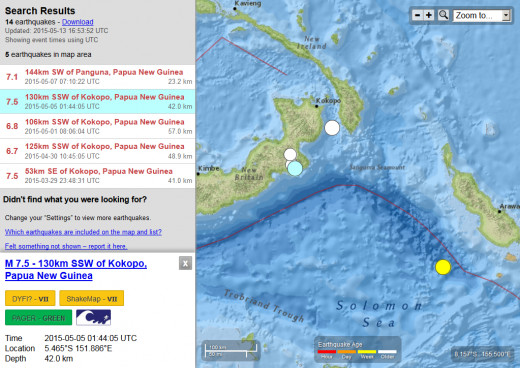
Possible Signs of Larger Quakes on the Horizon...
However, the 2nd deadly earthquake in Nepal of 12 May 2015, was not the only significant event during an 8 day and 21 hour window defined by Astro-aspect values. There was also a magnitude 7.45 earthquake on the island of New Britain (part of Papua New Guinea) on 5 May 2015. This was followed, on 7 May 2015, by a 7.05 magnitude event 356kms (221 miles) east of the first shock. This last temblor, south of Bougainville Island (part of the Solomon Islands), was also too large and too far away to be considered an aftershock of the former quake. Could these, as well as a prior 7.45 magnitude event on 29 March 2015, also be foreshocks to a larger earthquake to come there?
Finally, there was one more significant event, a 6.8 magnitude earthquake off the eastern coast of the northern part of Honshu, Japan, on 12 May 2015. That brings the total number of 6.8 magnitude or larger earthquakes inside the seismic window to 4, when the statistical odds indicated that there was not much better than a 50-50 chance of there being just 1 such earthquake during that time. What this means is that, during that window of 8 days and 21 hours in length, the number of significant events worldwide was almost 7 times more than usual. Put another way, the month of May 2015 had four times the number of significant events than normal during less than half of the time length for that month.
During the record breaking month of April 2014, there were 7 significant events in an 18 day period following an 8.15 magnitude event in northern Chile. Like this time, the great increase in activity occurred after a period of quiet seismic activity lasting 3 months (this time the quite period was November 2014 through January 2015, followed by 3 relatively average months). This new period of heightened activity was also not long after a quake of near great proportions (the 7.85 magnitude earthquake in Nepal).
© 2015 Joseph Ritrovato
